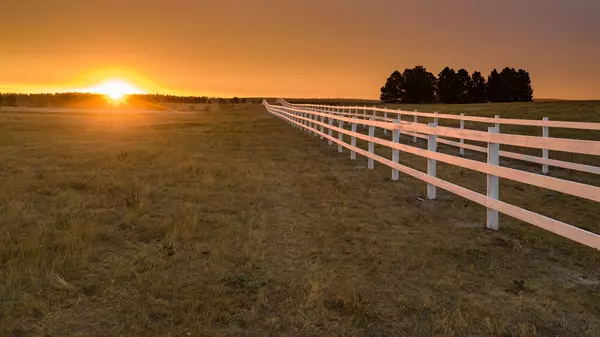Relocating Your Horse Farm to Colorado: A Comprehensive Guide

Relocating a horse farm is a monumental task that involves much more than simply moving animals from point A to point B. It requires meticulous planning and adjustment strategies to suit new environmental conditions. Colorado, known for its majestic landscapes and vibrant equestrian culture, presents unique challenges and opportunities for horse owners. This guide provides detailed insights into preparing for the long haul, helping your horses adjust to the elevation, efficiently moving your barn, and understanding the nuances of horse keeping in the Centennial State.
Preparation for the Journey
1. Health and Documentation:
- Veterinary Checks: Schedule a visit with your veterinarian to ensure that all horses are healthy for travel. This includes vaccinations that are specific to Colorado's ecosystem, a thorough dental check, and a fresh Coggins test which is essential for interstate equine transport.
- Travel Documents: Ensure you have all necessary documents at hand, including health certificates, proof of ownership, and a travel itinerary that you might need to present at state lines or inspection points.
2. Logistics and Planning:
- Trailer Readiness: Conduct a comprehensive check of your transportation equipment. The trailer should be spacious enough to accommodate your horses without causing undue stress. Check the flooring for integrity, ensure that the ventilation is adequate, and that all lights and brakes are operational.
- Training for Loading: If your horses are not accustomed to being trailered, spend adequate time getting them used to the process. This reduces stress and panic when you finally hit the road.
- Mapping Out the Route: Select a route that allows for smooth driving with minimal steep grade changes, keeping in mind Colorado's mountainous terrain. Plan for strategic stops where you can rest, water, and feed the horses while also allowing them to stretch.
3. Traveling Considerations:
- Feeding and Hydration: Maintain a regular feeding schedule using hay nets to prevent choking and promote hydration. Familiarize your horses with water from various sources if possible, or bring a supply from home to mix with local water gradually.
- Comfort Measures: Use shipping boots or bandages to protect the legs, and consider tail wraps to prevent tail damage. Provide ample bedding in the trailer to absorb shock and ensure comfort during the long drive.
Adjusting to Colorado’s High Altitude
1. Elevation Acclimatization:
- Adjustment Period: Allow your horses several weeks to adapt to the high altitude, which can affect their breathing, hydration levels, and overall energy. Start with light exercises and gradually increase intensity as they acclimate.
- Veterinary Support: Have a local Colorado vet examine the horses shortly after arrival to address any concerns related to altitude sickness and to modify their dietary needs specific to the new environment.
2. Weather and Environmental Adjustments:
- Sun and UV Exposure: Implement protective measures such as UV-blocking fly masks or sheets, and apply sunblock to pink-skinned areas.
- Temperature Fluctuations: Colorado's climate can swing dramatically between day and night; adequate blanketing may be necessary depending on the season.
Moving Your Horse Barn to a New State
1. Comprehensive Inventory:
- Catalog Everything: List every item in your barn, categorize them by necessity and fragility, and label everything meticulously. This helps in both unpacking and ensuring you do not leave anything vital behind.
- Feed and Medication Supplies: Stock up on several weeks' worth of feed, supplements, and medications to avoid sudden changes in diet that can upset your horses’ stomachs.
2. Transport Strategy:
- Large Equipment: For bulky items like stall fronts and heavy machinery, secure appropriate trailers and professional drivers who specialize in transporting agricultural equipment.
- Delicate Items: Pack all delicate items such as tack and electronics with extra padding and in climate-controlled environments if necessary.
Differences in Horse Keeping: Insights for Colorado Newcomers
1. Legal and Environmental Considerations:
- Understanding Water Rights: Familiarize yourself with Colorado water laws, which can be complex and significantly different from other states. Knowing your rights can help you plan the management of your new property effectively.
- Pasture Management: Due to less natural water availability and different soil types, managing pastures in Colorado can be challenging. Regular soil tests and possibly the integration of irrigation systems might be required.
2. Integrating Into the Local Equestrian Community:
- Networking: Join local equestrian clubs and online forums to connect with nearby horse owners. These contacts can be invaluable for sharing resources, finding services, and integrating socially and professionally.
- Local Services: Establish relationships with nearby feed stores, farriers, and veterinarians quickly. Their expertise will be crucial in helping your horses settle in and thrive in their new home.
Conclusion
Moving your horse farm to Colorado is both an exciting and an intensive endeavor. With proper preparation, a well-thought-out logistics plan, and strategies for environmental adjustment, you can ensure a seamless transition. Remember, the well-being of your horses and the success of your relocation hinge on the details—so plan thoroughly, execute carefully, and welcome to your new home in the beautiful state of Colorado!
"My job is to find and attract mastery-based agents to the office, protect the culture, and make sure everyone is happy! "



